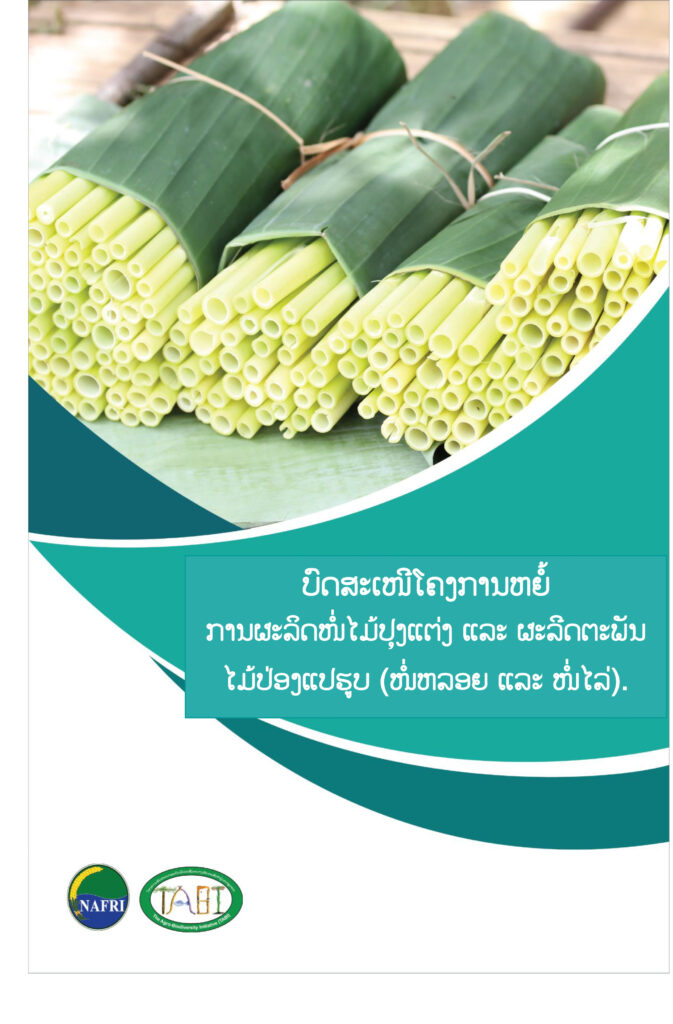Bamboo is an important biodiversity resource and is often perceived as the most economically important NTFP of Lao PDR. It is imperative for the livelihoods of rural communities (cash income, food security, and material) as well as being socially and culturally important. Bamboo also plays a vital environmental role including reducing soil erosion, creating microhabitats for a diversity of plants and animals and contributes to carbon sequestration, all of which contribute to climate change mitigation. A hectare of bamboo could potentially capture 5 tons of carbon per year. And using the bamboo fiber for making product sequesters even more. There are more than 6,000 square kilometers of natural bamboo forests in the Lao PDR consisting of more than 50 species. And bamboo is a perennial species that grows new shoots every year making it a valuable alternative within upland farming systems.
Bamboo species are fast-growing and can be categorized into two main product groups: 1) bamboo canes as a wood substitute; and 2) bamboo shoots as food. The fiber from bamboo canes is processed into hundreds or thousands of products including construction materials, household items, farm and fish tools, furniture, handicrafts, incense-sticks, chopsticks, charcoal, paper, toys, gifts and small items such as toothpicks. And bamboo shoots are used as a very common and popular food in Asia. Products from bamboo in the Lao PDR are important both domestically and for export.
Agroforestry and Ecosystem Management, Capacity Building and Agricultural Education for Sustainability, Market Access and Value-Added Agro-Products
Types:
Report, case study report
published in 2020, Lao language




